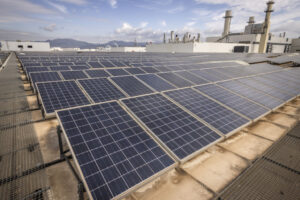For Architectural Digest, by Nick Mafi. If the 2016 summer games in Rio de Janeiro were any indication of what to expect in 2020, city officials in Tokyo have their hands full preparing for the upcoming Olympic games. Some 500,000 foreigners traveled to Rio, purchasing the 7.5 million tickets. Accommodating this massive surge of attendees and providing transportation throughout the city proved no easy task. Preparing a city for the Olympic games often requires updating existing infrastructure, while also building completely new structures. In Brazil, $11.5 billion was spent on hosting the games, $7.1 billion of which was exclusively spent on the infrastructure of 37 venues. According to Bloomberg, in Tokyo, 45 new skyscrapers are in the process of being built in time for the Olympics, in addition to a new train station and stadium. Renowned Japanese architect Kengo Kuma has designed the Shinagawa New Station complex—the first new train station planned for Tokyo’s busy JR Yamanote line since 1971. Kuma’s design features a glass-and-steel roof that will resemble traditional Japanese origami. The sides of the station will also feature glass windows, with the goal of blurring the lines between the existing area and its newly created structure. Kuma and his team are also in charge of designing the National Stadium for the summer games, which will cost roughly $1.4 billion to complete. Another of the major landmarks in the process of being completed for the Olympics is three massive towers in the Toranomon Hills area of Tokyo. One of the three structures is being designed by the international architecture firm OMA. The firm, which was founded by Pritzker Prize–winning architect Rem Koolhaas, is working on building a mixed-use high-rise that combines office spaces, hotels, and retail spaces, as well as a new subway station. The location of the OMA’s structure will connect commuters to other key parks of the city, including the planned Olympic village in Tokyo Bay to the Olympic Stadium. According to Shohei Shigematsu, a partner at OMA, “This axis of activity is designed to run through the base by incorporating an elevated park, extending vertically to wrap the tower; communicating the activity of the complex at an urban scale.” When 2020 rolls around and the Olympic games commence, it’s anybody’s guess as to which country will take home the most medals. One thing that appears to be for certain, however, is that Toyko will be left with a skyline full of innovative new buildings. More from Architectural Digest: 126 Stunning Celebrity Homes Inside Jennifer Aniston’s Gorgeous Beverly Hills Home Go Inside a $53 Million Private Jet Gisele Bündchen and Tom Brady’s Incredible L.A. Mansion 22 Incredible Indian Palaces (You Can Stay At) Tour the World’s Most Luxurious Submarine Superyacht
















